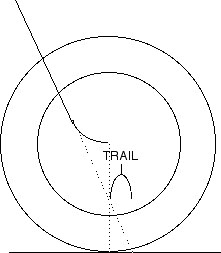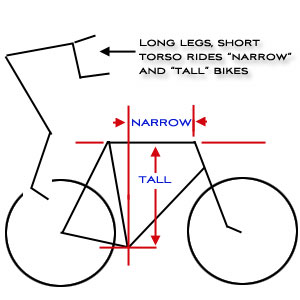A new angle on seatposts
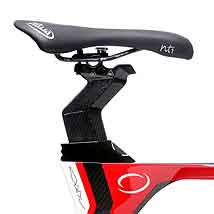
Late last year Orbea introduced a 78° seatpost for its Ordu. This post (pic adjacent) sells for $250 to existing Ordu customers who need to get steeper, or it comes as an original equipment option for those buying a new Ordu. What's an original equipment option? You can buy the Ordu with its 74°/76° two-position post, or its 78°/80° post.
If you want the steeper post on a new Ordu, make sure this is the one on the bike when you buy it. In fact, this will be true for each of models made by these bike companies described here. These saddles can come O.E., but you need to make sure they're aboard your new bike when you buy it (and don't take "no" for an answer; all these bikes can and should be sold with these new posts at no extra charge, if this is the post you want for your new bike).
QR's new post (pic just below) is, again, available either in the aftermarket or as an original equipment post. It fits into three models, the Lucero, the Caliente, and the Seduza. The entire mold was reworked between the 08 and 09 seasons, with the seat angle of these three models steepened up a degree (in most sizes, from 76° to 77°). This new post, which comes O.E. on these bikes, further steepens the bikes a couple of degrees or, to be more precise, allows for a wide range of seat angles, as you can see by the slot allowing the post hardware to move fore and aft.
This new post will fit into all vintages of these three models. It's offered at $190 to those who have older QR bikes (specifically, these three models) but who need a steeper position.
The new Kuota post (pic far below) steepens the Kalibur model. The Kalibur is often a well-fitting bike in terms of stack and reach, but is disqualified from consideration on a lot of riders because of the inability to get the post steep enough. This new post fixes that problem.
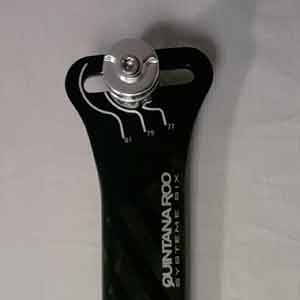
How do these three models of bikes compare to each other, geometrically? The Ordu is "narrow" versus the Kalibur and this might be well illustrated by looking at the bikes in each of their first three sizes. The Kalibur and Ordu are 1mm, 4mm and 3mm apart in "stack" respectively. In other words, they are close to equivalent in "height."
But the Kaliber is "longer" than the Ordu in these three sizes by 21mm, 16mm and 19mm respectively. So, while these two molds are very close as regards their height or tallness, the Kalibur is longer than the Ordu in each size. What does this mean? That the Ordu is better ridden by those who ride slightly shallower, or by those who're slightly shorter in the torso. The Kalibur is better ridden by those who ride slightly steeper, or who are slightly longer in the torso.
How does the QR fit into this schema? Remember that these QR models feature a 650c model in their smallest sizes, and that bike is just a smaller bike all the way around in that smallest size, versus the smallest sizes of the Kalibur and Ordu. That 48cm QR is a great mold, and the QR Seduza, Kuota K Factor, Felt B16 and Cervelo P2 are all really fine options in that $2000 to $2500 range for those shorter than 5'6".
Once you get into the 700c molds, the QR sizes are rather like the Ordu sizes in terms of reach in proportion to stack. They are a bit on the narrow side, just like the Ordu. Mind, this is just the Seduza, Caliente and Lucero I'm talking about (all of which pop out of the same carbon molds during their manufacture).
QR has a split geometric personality. These three bikes are narrow, but the aluminum Tequilo at the entry level, and the highest-end CD.01, are each longer bikes. They don't quite fit the same way as the three carbons in between. This is because the molds for the midrange carbon bikes were made first—the CD.01's mold was made later, and QR had adjusted its geometry by then.
This is not to say that the CD.01 fits better than its carbon midrange siblings, just that it fits differently. That's the beauty of establishing your own fit coordinates distinct from any bike model: your coordinates are your own, and you then find the best bike to place underneath you.
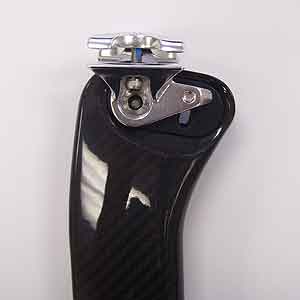
The thing to keep in mind about all these bikes written about here—the Kalibur, the Ordu, and the three midrange QRs—is that you now have the freedom to ride these bikes with a seat angle as steep as you want. But this freedom ought to be used with a caution: The steeper you ride these bikes, the more weight you place on the front wheel, and the longer the "steering lever" on the bike.
What I mean is this: Let's say you're riding a Lucero or an Ordu and your "cockpit" is appropriate. Let's further say you've got a 10cm stem on your bike. You want to ride with a steeper relative seat angle, but you can't… until now, because you're now able to lay your hands on your new steeper seatpost! If this allows you to place your saddle 2cm or 3cm steeper than it has been, your stem must now be a 12cm or 13cm length to keep your cockpit distance appropriate, right? The "steering lever" I'm talking about is that distance from the bike's steer column to that place in front of the bike where you're actuating the turn. The longer the steering lever, the more weight on the front wheel, and the more weight cantilevered in front of the steer column.
The take-away here is to use the freedom these new seatposts give you judiciously. Two geometric stats with which you should familiarize yourself are "front/center" and "trail." The first is the distance between the bottom bracket axle and the front wheel axle. The more front/center a bike has, the more evenly the weight on your tri bike is displaced, front to rear. This doesn't mean more front/center is always better, because, too much front/center and your bike is too long, and will feel sluggish as you try to muscle it through turns, and when you're out of the saddle. If you ride steep, good front/center numbers are in the neighborhood of 58cm on a bike's 50cm size to 65cm in its 60cm size.
What you need to know about "trail" is this: the more trail, the more the bike's handling is either "predictable" or "sluggish." The less trail, the more a bike's handling is "sprightly" or "nervous."
Why do I mention this? Because, all these models above are going to have less front/center than other tri bikes that are built to be ridden at 78° or 80°. You'll know this because these models described in this article were originally built at 74° to 77°, hence they're needing these newly developed seatposts getting those riding them steeper (if in fact those aboard these bikes need to ride steeper). Because they were originally built nominally shallower, they have shorter front/centers.
One way to counteract these shorter front/centers is to slow down the handling of the bike through adding trail. The Cannondale Slice is a good example of this: It doesn't have a lot of front/center, but it's got a lot of trail throughout its size run.
You don't need to worry about any of this if you're riding your Seduza, Ordu, Kalibur at 76° or 77°. But if you're still reading this article, I assume you're contemplating using one of these new seatposts that'll place you steeper aboard one of these bikes. If you're going to slam everything forward and ride at 80°, just keep in mind that a bike with less front/center and less trail, ridden at an angle this steep, is a bike on which you must be vigilant, especially on descents, braking, turning.


